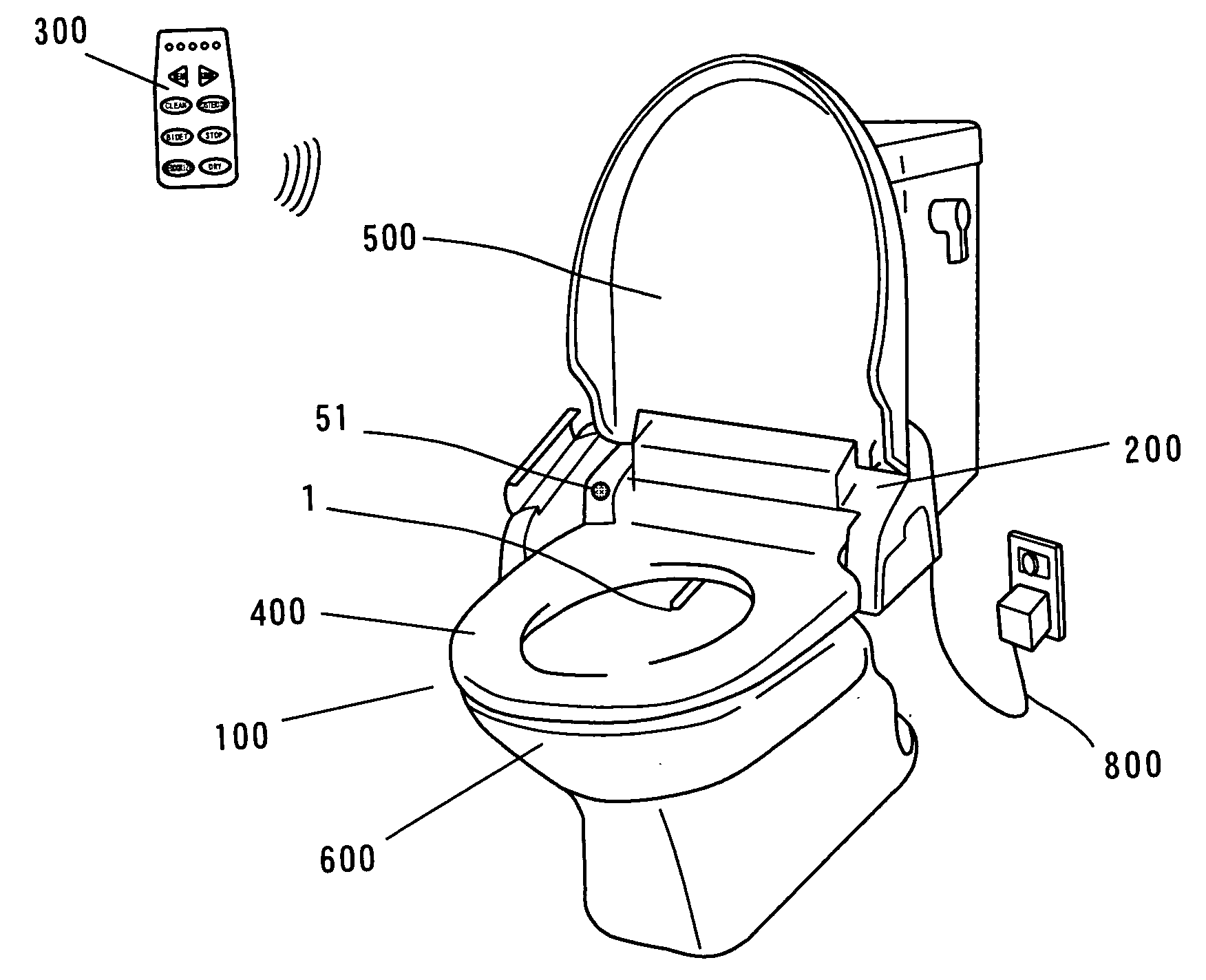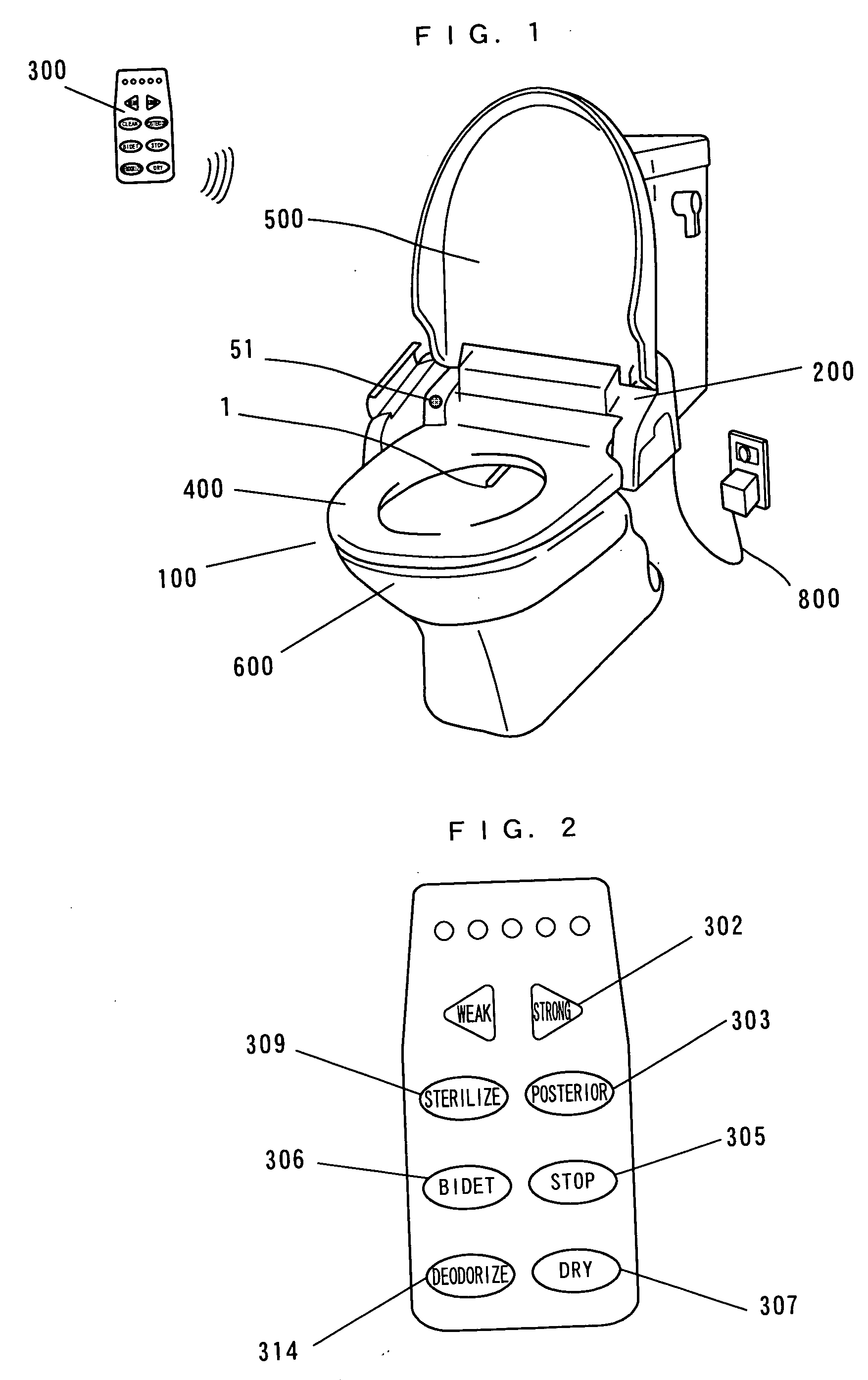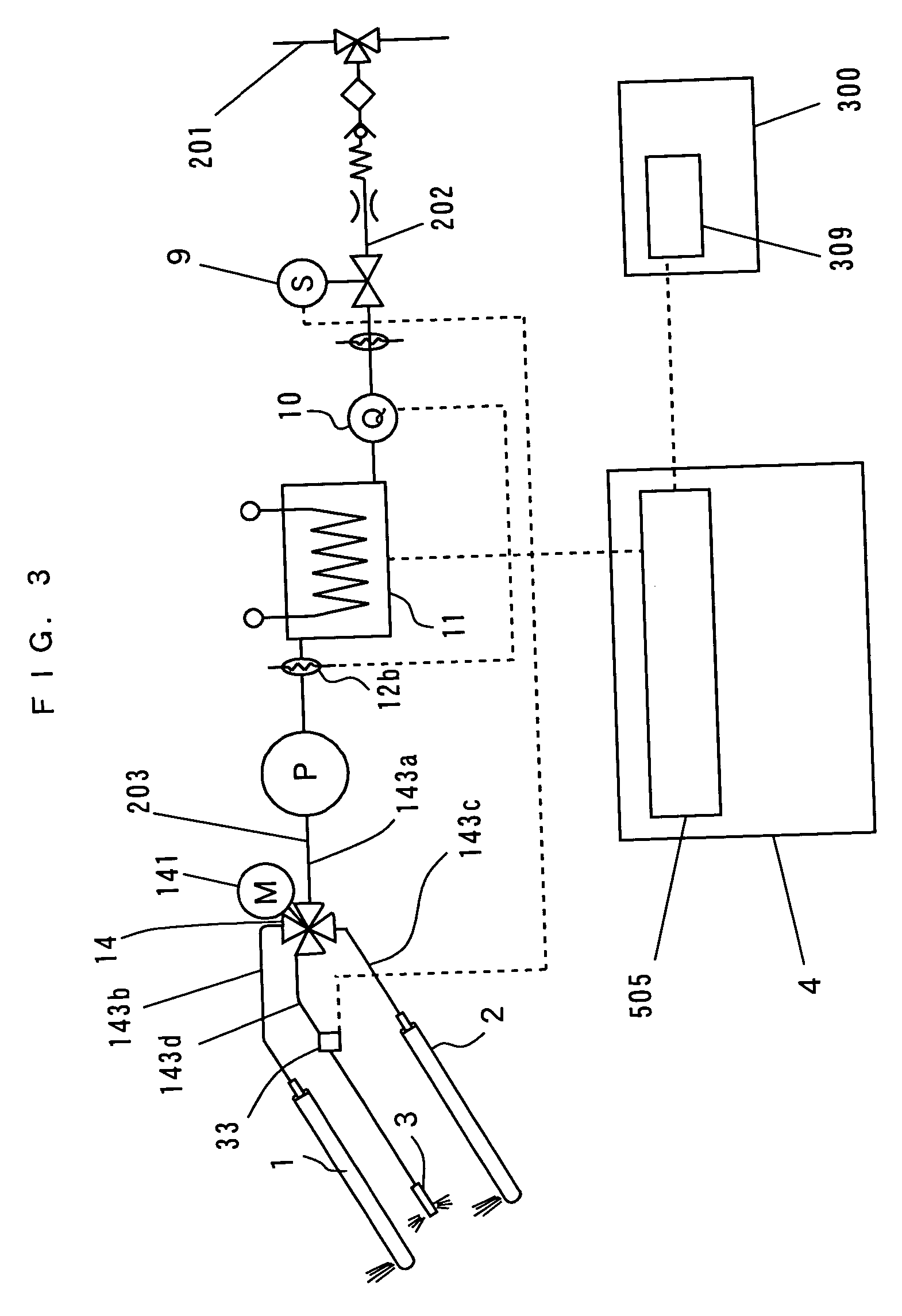Hygiene washing apparatus
- Summary
- Abstract
- Description
- Claims
- Application Information
AI Technical Summary
Benefits of technology
Problems solved by technology
Method used
Image
Examples
first embodiment
[0115]FIG. 1 illustrates the appearance of a sanitary washing apparatus according to a first embodiment of the present invention.
[0116] In FIG. 1, a hot-water washing toilet seat serving as a sanitary washing apparatus (hereinafter referred to as a sanitary washing apparatus) 100 is installed on a toilet bowl 600. The sanitary washing apparatus 100 comprises a main body 200, a cover (toilet cover) 500, a toilet seat 400 on which a user is to sit, and so on. The sanitary washing apparatus 100 comprises a water supply pipe for receiving the supply of washing water from a tap water (indicated by a tap water pipe 201 shown in FIG. 3) and an electrical cable 800 for receiving the supply of power from an outlet on a wall surface. The inside of the sanitary washing apparatus 100 comprises a posterior washing function for washing the anus of a user, a bidet washing function for washing the female private parts after urination, a drying function for drying the private parts of the human bod...
second embodiment
[0161] A sanitary washing apparatus according to a second embodiment of the present invention will be described on the basis of FIGS. 10 to 25.
[0162]FIG. 10 is a perspective view showing a state where a sanitary washing apparatus according to an embodiment of the present invention is mounted on a toilet bowl.
[0163] As shown in FIG. 10, a sanitary washing apparatus 100a is mounted on a toilet bowl 600. A tank 700 is connected to a tap water pipe, to supply washing water to the toilet bowl 600.
[0164] The sanitary washing apparatus 100a comprises a main body 200a, a remote control device 300, a toilet seat 400, and a cover 500.
[0165] The toilet seat 400 and the cover 500 are mounted on the main body 200a so as to be capable of being opened or closed. Further, the main body 200a is provided with a washing water supplying mechanism including a nozzle 30, a seating sensor 51, and an automatic opening / closing toilet bowl system, described later, and contains a controller. The seating s...
third embodiment
[0289] Description is now made of a main body 200a in a sanitary washing apparatus 10a according to a third embodiment of the present invention. The sanitary washing apparatus 100a according to the third embodiment has the same configuration as that of the sanitary washing apparatus 10a according to the second embodiment. The operation of the main body 200a in the sanitary washing apparatus 10a according to the third embodiment differs from the operation of the main body 200a in the sanitary washing apparatus 10a according to the second embodiment in the following points.
[0290] Description is now made of the operation of a controller 4 in the main body 200a in the sanitary washing apparatus 100a according to the third embodiment. FIGS. 28 and 29 are flow charts showing the operation of the controller 4, and FIG. 30 is a diagram showing an example of the control timing of the controller 4.
[0291] The horizontal axis shown in FIG. 30 indicates time. FIG. 30 (a) indicates the timing o...
PUM
 Login to View More
Login to View More Abstract
Description
Claims
Application Information
 Login to View More
Login to View More - R&D
- Intellectual Property
- Life Sciences
- Materials
- Tech Scout
- Unparalleled Data Quality
- Higher Quality Content
- 60% Fewer Hallucinations
Browse by: Latest US Patents, China's latest patents, Technical Efficacy Thesaurus, Application Domain, Technology Topic, Popular Technical Reports.
© 2025 PatSnap. All rights reserved.Legal|Privacy policy|Modern Slavery Act Transparency Statement|Sitemap|About US| Contact US: help@patsnap.com



